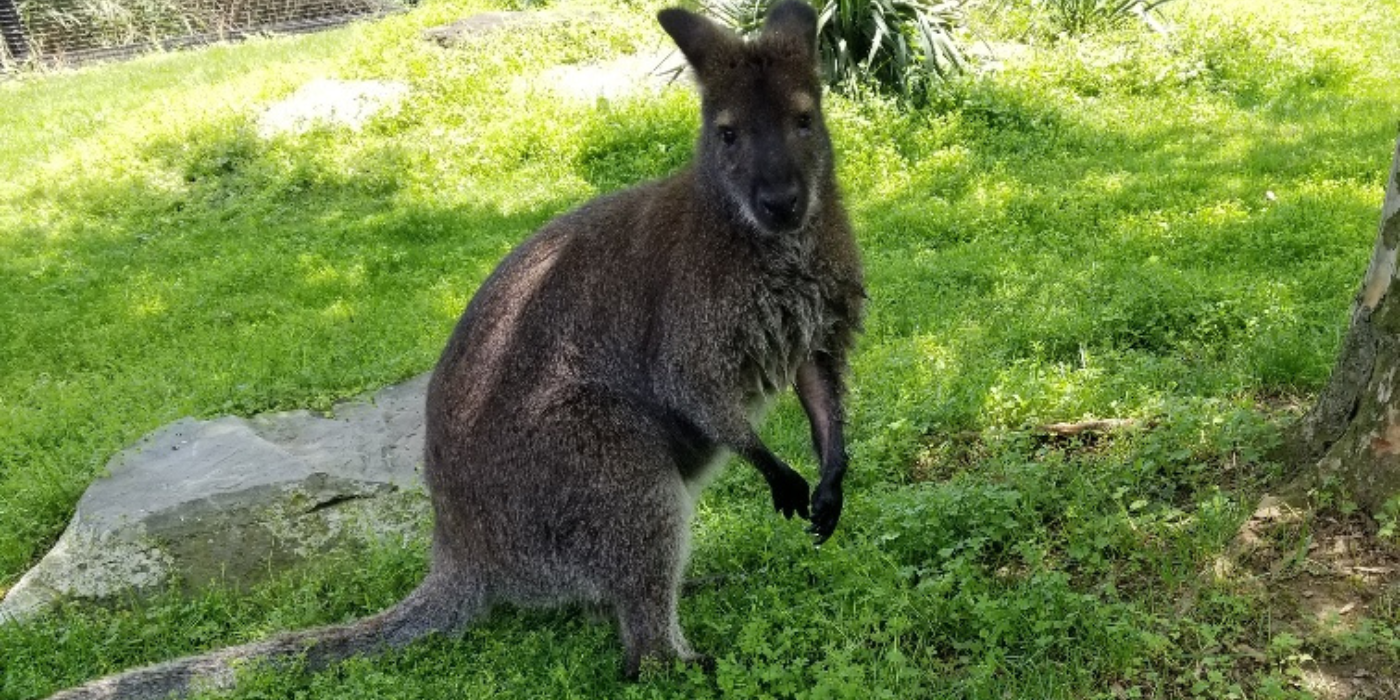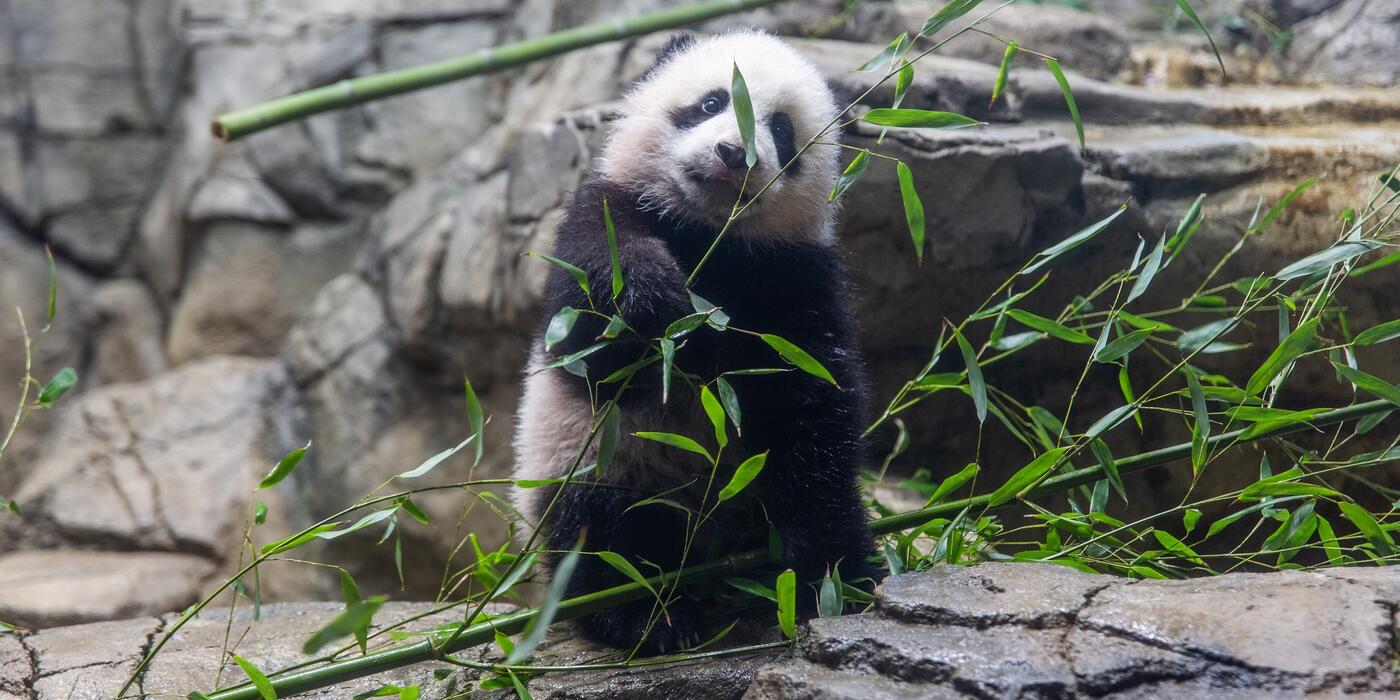How to Care for Wallabies
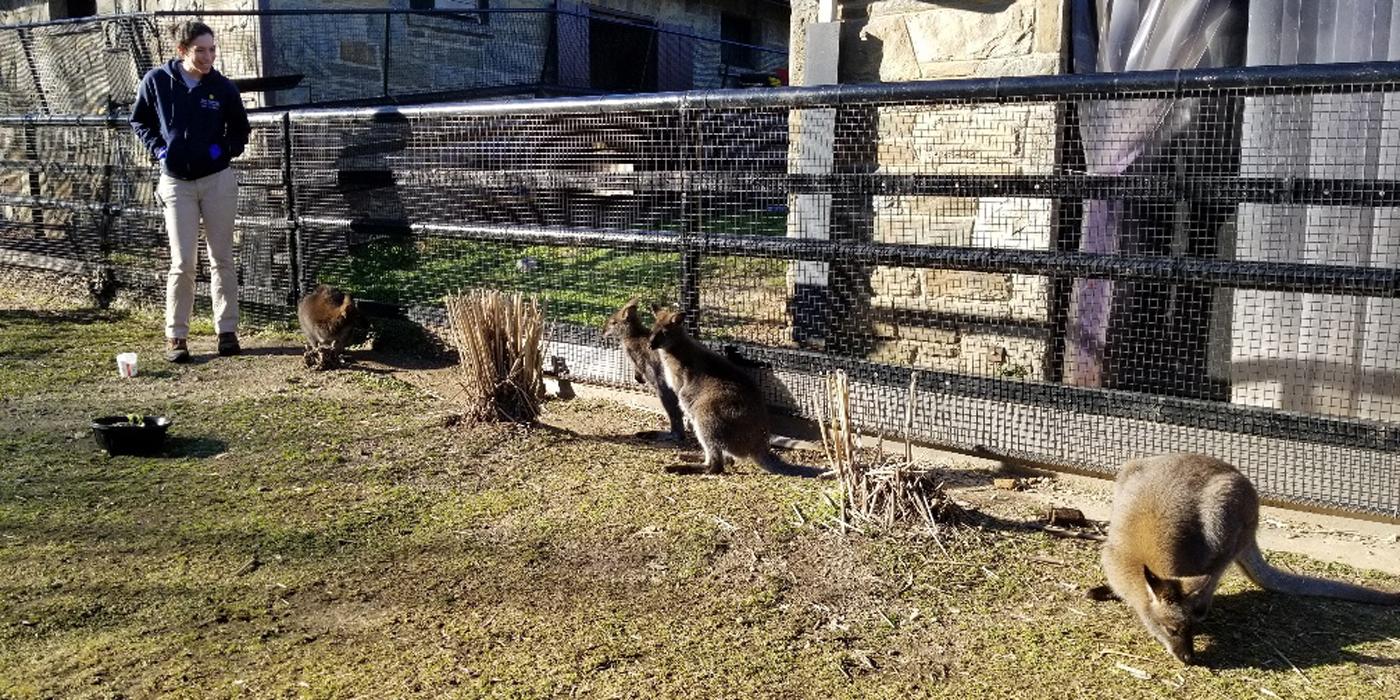
Hop into caring for Bennett’s wallabies with animal keeper Esther Wray! Esther works in the Smithsonian’s National Zoo’s Small Mammal House with a variety of animals, including naked mole-rats, tamanduas, red-ruffed lemurs and marsupials like opossums and Bennett’s wallabies!
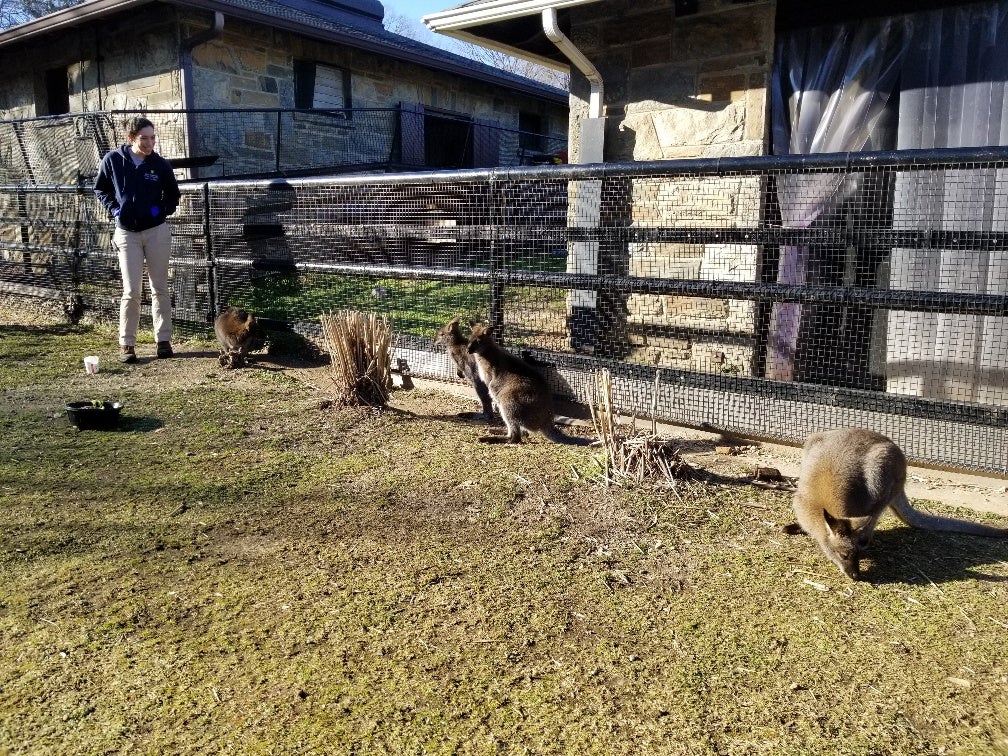
Working with Bennett’s wallabies, also known as red-necked wallabies, is a highlight of my day. I learn something new about them all the time. For example, female wallabies’ milk composition—protein, fat, antibodies and carbohydrate content—changes as a joey grows. Two joeys born months apart will overlap time nursing, so mom produces two different types of milk to meet each joey’s nutritional and developmental needs. They’re incredible animals.
When our current wallabies first arrived at Smithsonian’s Nation Zoo in 2018, it was the first time we had Bennett’s wallabies since 1990. It's so special to continue to watch our program grow.
Many visitors may mistake a wallaby for a miniature kangaroo. Kangaroos and wallabies are in the same genus, Macropus, which roughly translates to “large footed.” They are also both marsupials. However, they are not the same species.
The biggest difference between wallabies and kangaroos is size. Kangaroos are larger, reaching heights of about six feet tall. Wallabies reach about three feet tall. Another visible difference is the color of their fur. Wallabies can be variants of red, white, gray or black. Kangaroos are usually red or gray, depending on the species.
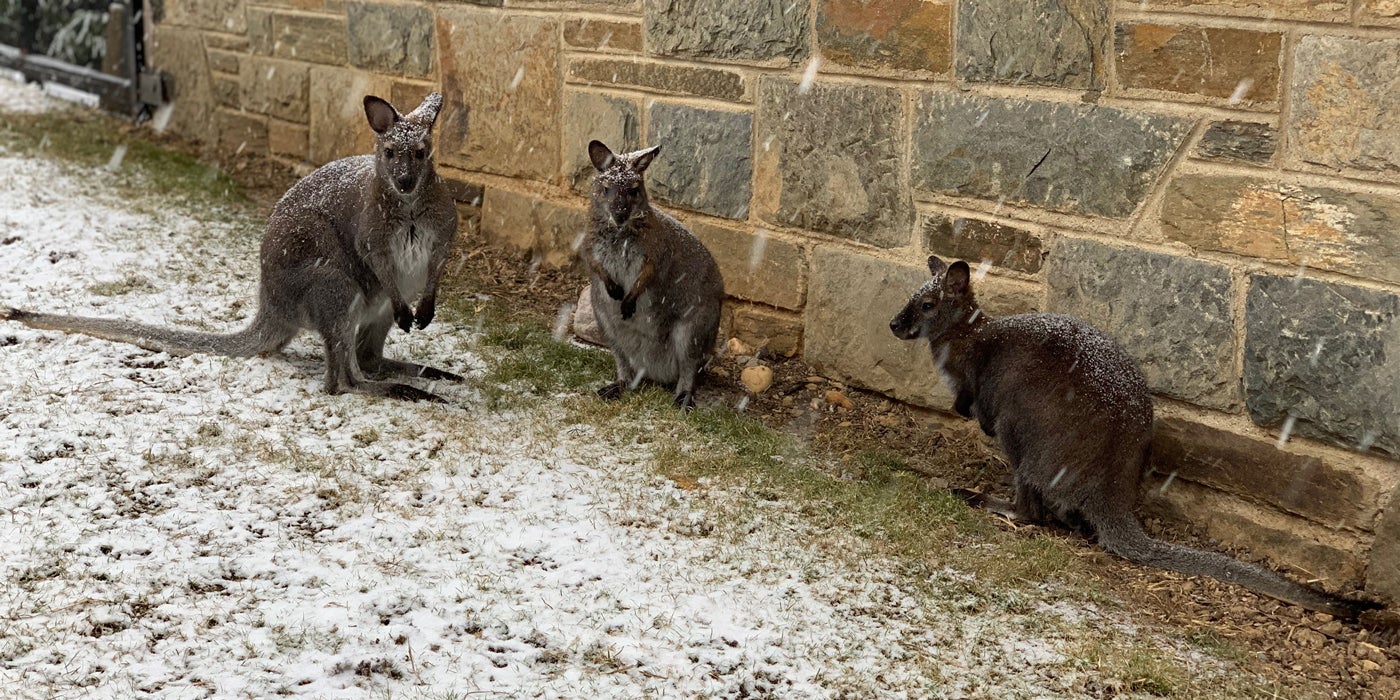
Wallabies are mostly from Australia and Bennett’s wallabies are specifically from Tasmania. They live in temperate forests where the climate is similar to what we experience in Washington, D.C.
The main difference in climate is the extremes. Our wallabies do not seem to mind the cold. I’ve seen them sitting out in the snow! We provide them with heat lamps in their barn, though, if they want a warmer spot to sit in. Summers here are a bit harsher than what they would experience in the wild, so we provide them with lots of shade.
Our wallabies also seem to enjoy the rain. There have been a few mornings that I’ve come into work during a downpour and was surprised to see the wallabies sitting outside despite having access to a dry, indoor habitat. Wallabies do not sweat. Instead, they lick their forearms and then move their arms back and forth. As the water evaporates off, they are cooled down. Being out in the rain, especially on a hot day, has the same effect.
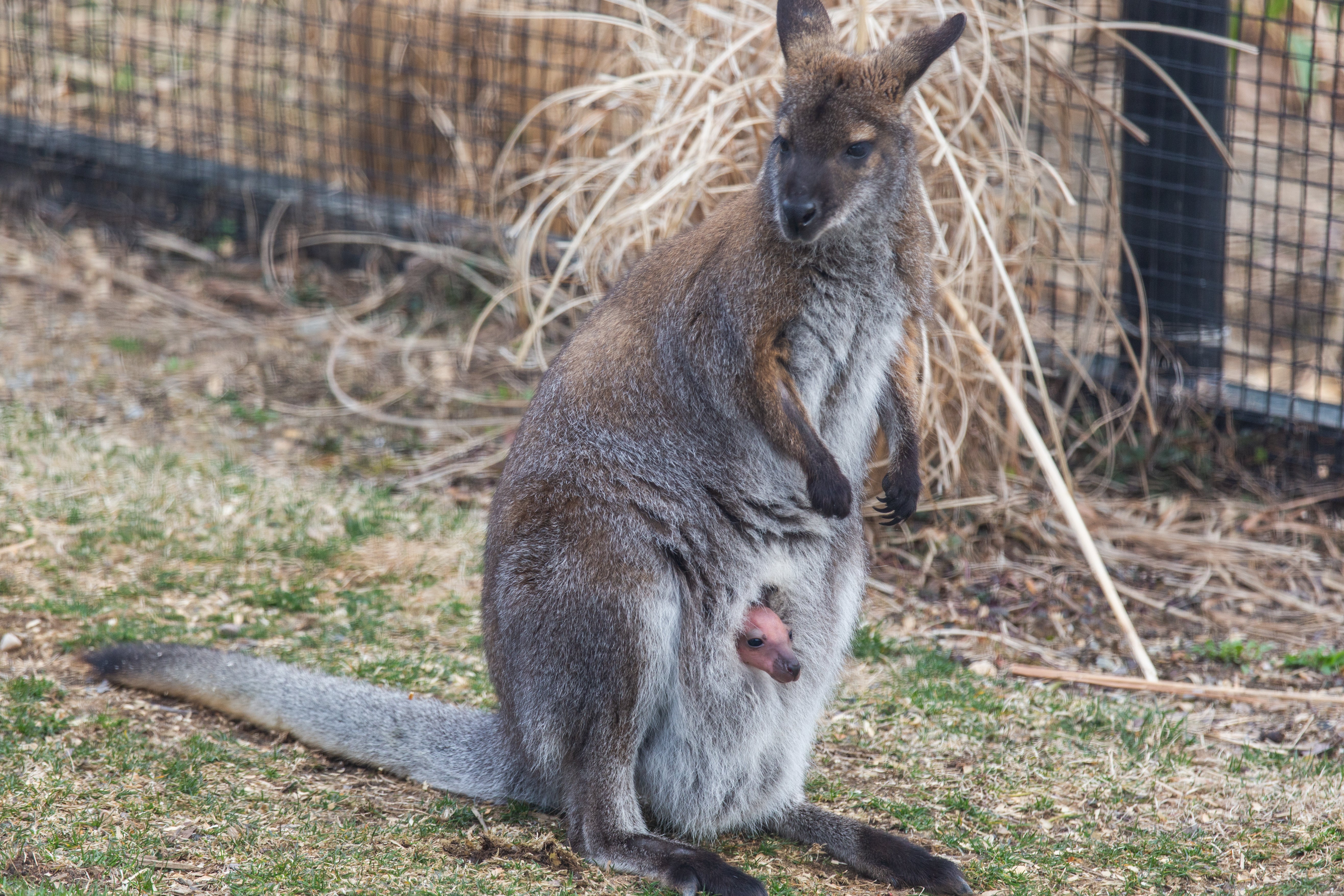
Tall grasses and plants also mimic their natural habitat. Our two younger wallabies, 2-year-old Lenah and 1-year-old Derby sometimes sleep in the shrubs, hidden among them. Wallabies tend to be on the “flight” end of the flight or fight spectrum, so providing them with places to hide is important. In planning their exhibit, we made sure there were no tight spaces where they would feel cornered.
Due to their flighty nature, it takes a long time and a lot of patience to build relationships with them. I remember when Victoria first arrived at the Zoo, we could not get within ten feet without her darting off. Over time, we worked to build her trust in us. Now, she lets me clean near her and will even sniff my fingers! If I have food, she may even approach me. It’s rewarding to see that progress.
Adelaide, or Addie for short, is the friendliest of our wallabies. She will let us touch her, do pouch checks and give her scratches. She is also the most low-key. She utilizes the crawling motion to get around the exhibit more than the others. The wallaby crawl is when they put all four paws are on the ground and lift their hind legs to move forward. When they lift their hind legs, their weight transfers to their tail. Visually, it’s similar to how a caterpillar inches forward.
Wallabies will hop when they need to get somewhere quickly. They can jump up to 13 feet in a single stride and reach speeds up to 30 miles per hour. In the morning—when the wallabies are most active—Victoria, Lena and Derby will zoom around the exhibit. It’s fun to watch them bounce around while we clean and prepare the yard!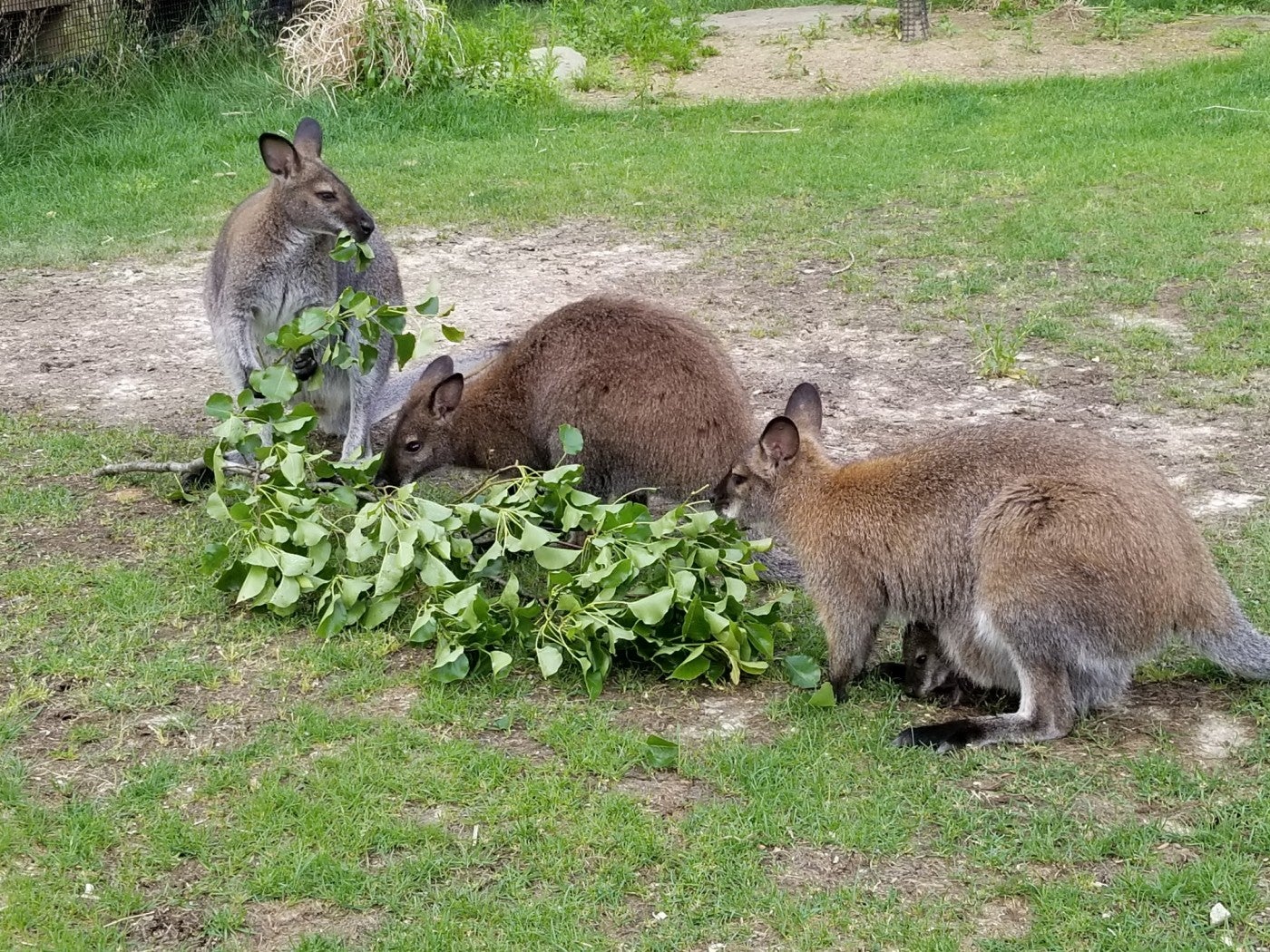
Wallabies are herbivores and eat primarily grasses and leafy plants. In the wild, they may eat roots if they cannot find enough water. While our wallabies have received sweet potatoes as part of their diet, they generally prefer browse (leafy branches) and macropod pellets. We’ve tried many different foods to see if they’d like something different, but they seem to enjoy pellets the most.
This can make choosing enrichment items to for the wallabies a bit of a challenge for us. Our wallabies’ habitat seems to outweigh their interest in any toys we give them. I sometimes try to make their food a little more challenging to get by sticking browse in different levels of the yard’s fence or tucking it into different areas around the yard. Changing the location and access to their daily diet encourages them to explore the exhibit!
Most animals at the Zoo are trained to voluntarily participate in their own health care. While working with an animal, a keeper will give a cue to do a certain behavior. If the animal does the correct behavior, it receives a reward, usually in the form of food or verbal praise (“good job!”). With positive reinforcement training, animals have the choice to participate or walk away. The experience helps to build their trust in us and allows us to monitor their health.
For wallabies, training is a challenge because, while they like their browse and pellets, they are not food-motivated. There’s no special treat we can give them as a reward. When we need them to do a husbandry behavior, like get on a scale, we gently guide them to it. There’s no cue given by keepers and their participation is voluntary. After we get their weight, we will tell them “good” and give them space. Having immediate access to the yard is positive for them and, we hope, they associate our leaving them alone with doing the correct behavior.
Currently, we are focusing our efforts on building relationships so that when we need to guide them, the process is as stress-free as possible for everyone involved. A prime example of this is when Addie needed eye drops. Her right eye was watery and started to produce discharge, so we gave her drops to help clear up any irritation or infection. Since she is comfortable with us touching her, it was easy for us to administer her medication.
Currently, we have four female wallabies. Lenah and Derby were born since the program started, providing us with a great opportunity to learn more about wallaby reproduction.
I’m particularly grateful for the research we did before the wallabies arrived. I’ve experienced a few completely normal things that were a little shocking to experience for the first time. Wallabies can turn out their pouches to clean them. It’s very pink and not the prettiest sight. The first time I saw Victoria do this, I was a little taken aback, but quickly understood what I was witnessing.
I also read about different vocalizations wallabies can make. The first time I heard their guttural, rough chirp was when Lenah was just starting to venture out of the pouch. She had made her way into the barn by herself one day. When Victoria, her mom, was nowhere in sight, Lenah started chirping. After a few minutes, I started looking for Victoria, too. Eventually, I found her napping between some plants. When she saw me, she got up and vocalized back to Lenah. Victoria is an excellent mom. Sometimes, great moms just need a nap!
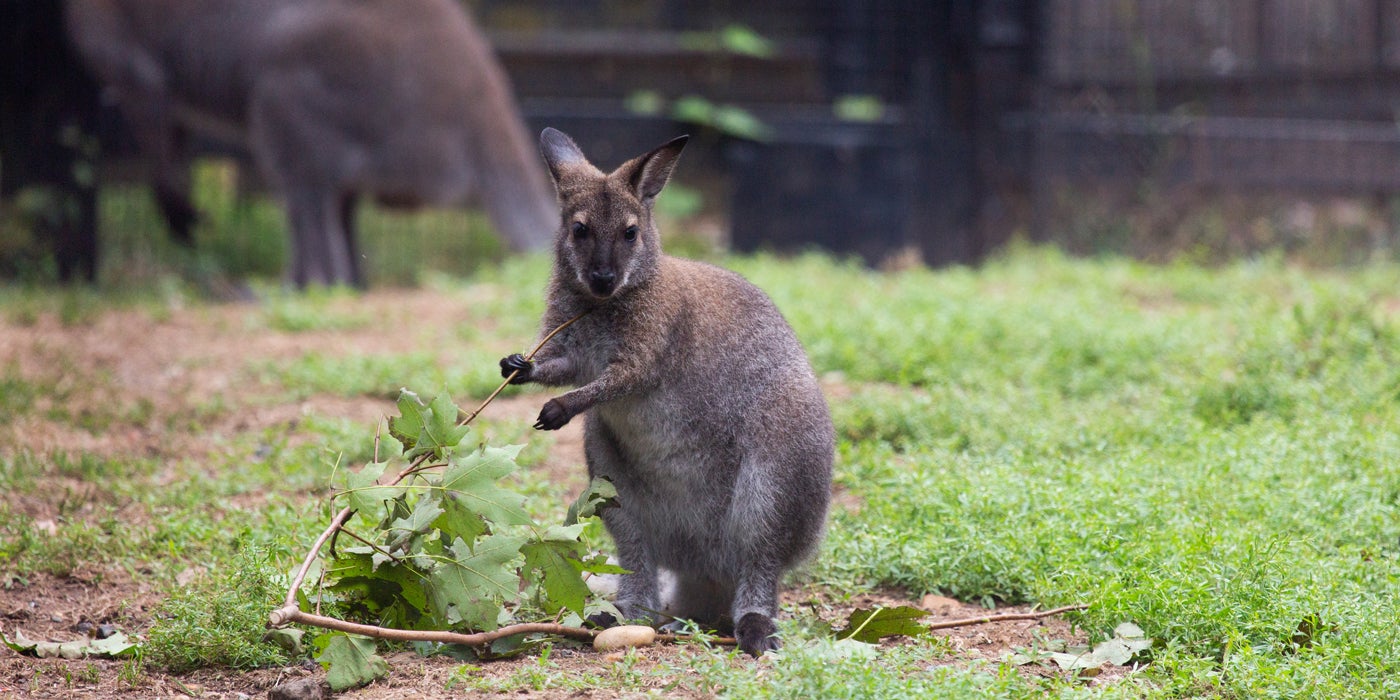
Beyond research and getting hands-on experience, it's important for aspiring keepers to keep an open mind when it comes to choosing which animals they want to care for and learn more about. As you work with a variety of animals, your love and curiosity for them will surely grow.
Hopping with excitement about wallabies? Find them outside the Small Mammal House on your next trip to the Zoo. Plan your visit today!
Looking for more stories from our keepers? Check out a variety of stories from all over Smithsonian’s National Zoo and Conservation Biology Institute here.
Related Species:

